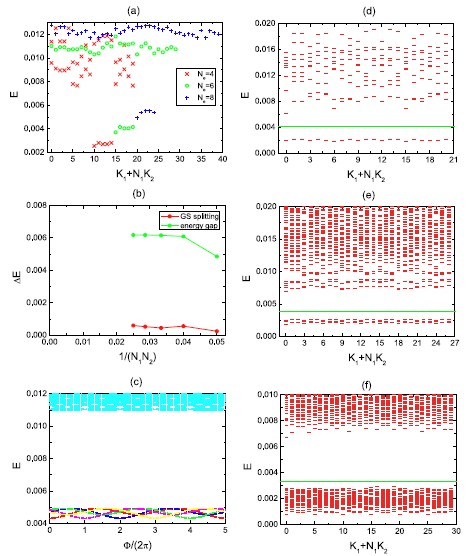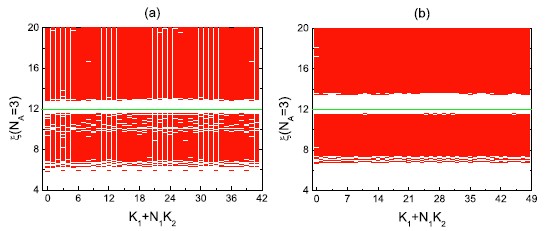Researchers propose new phases of matter as fractional Chern insulators of lattice model with higher Chern number
The research of fractional quantum Hall effects is an important topic in condensed matter physics. The conventional fractional quantum Hall effects in general happen with strong external magnetic field, low temperature and in continuum systems. Recently, people are also interested in nearly flat bands lattice models with broken time reverse symmetry without magnetic field. It may harbor lattice analogues of fractional quantum Hall states which may potentially persist at high temperatures. This may offer the possibility for new phases of matter.
Recently FAN Heng from Institute of Physics, Chinese Academy of Sciences with Dr. LIU Zhao in Beijing Computational Science Research Center, in collaboration with Dr. Emil J. Bergholtz in Freie University Berlin of Germany and Prof. Andreas M. Laeuchli in University Innsbruck of Austria reported the result of fractional Chern insulators in topological flat bands with higher Chern number (Phys.Rev.Lett.109, 186805 (2012)).
They consider the lattice model describing Rashba spin-orbit coupled particles on pyrochlore slabs including several kagome layers which provide the flat bands with arbitrary Chern number. They find compelling evidence for a whole series of incompressible fractional Chern insulator states, both for fermions and bosons. The properties of those states can be listed as: (1). There is an energy gap between ground state and the excited states, which is robust under twisted boundary condition. (2). The ground state degeneracy is the same as the Laughlin state with same corresponding filling factor. Also, those states are qualitatively distinct from conventional multilayer fractional Hall states by weakening the interaction in the midlayer. It is thus demonstrated that the states discovered, despite a number of similarities, are qualitatively different from conventional (single and multilayer) fractional Hall states. The realization may be implemented in such as cold atom systems with spin-orbit coupling.
In this work H.F. and Z.L. were supported by 973 program and NSFC and CAS. The related work is published in Physical Review Letters 109, 186805 (2012).
 |
| FCI states with filling factor 1/5. (a) The low-lying energy spectrum. (b) The finite-size scaling analysis. (c) The x-direction spectral with twisted boundary condition. (d-f)The quasihole excitations.(Image by LIU Zhao et al.) |
 |
| Entanglement spectra, (a)Double-layer with filling factor 1/5, (b)Three-layer with filling factor 1/7. (Image by LIU Zhao et al.). |



